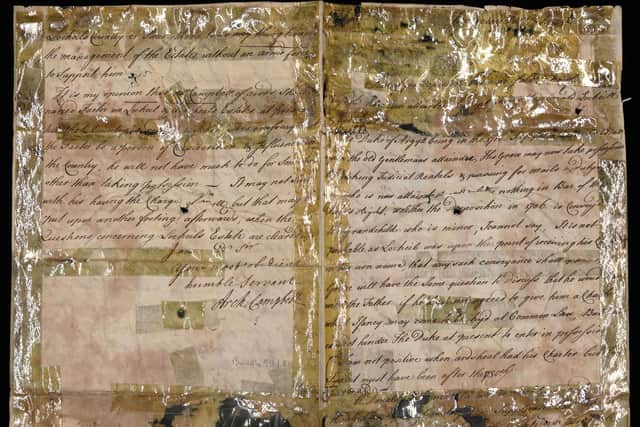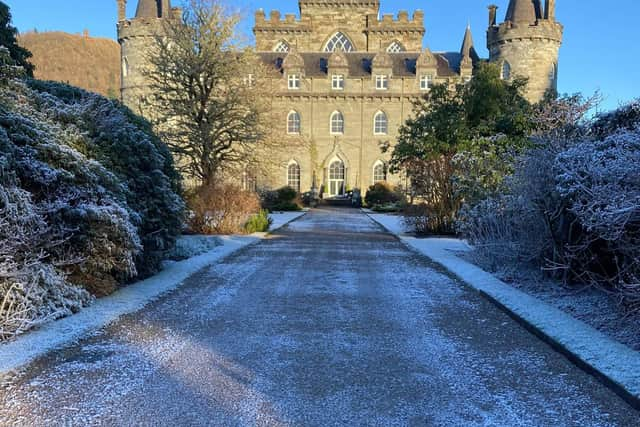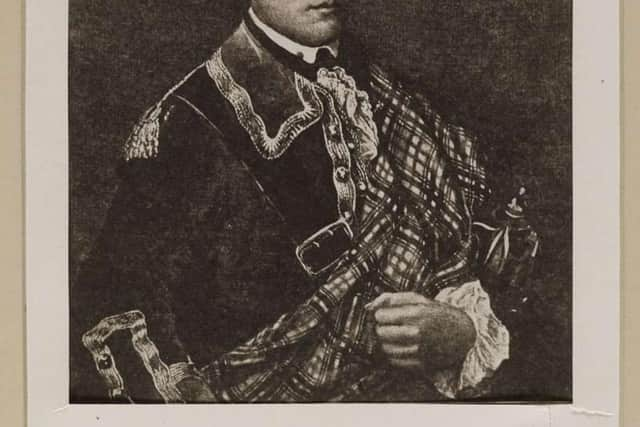The downfall of a Jacobite chief and a 270-year-old letter in Scotland saved from decay
A decaying letter that outlines the downfall of a clan chief who became one of the great figures of the 1745 Jacobite rising is to be saved.
The letter was penned in September 1746 by Archibald Campbell of Barncarie, a chamberlain to the Duke of Argyll, regarding the forfeiture of the estates of Donald Cameron, 19th Chief of Clan Cameron, who was also known as Lochiel.
Advertisement
Hide AdAdvertisement
Hide AdFrom a family steeped in the Jacobite cause, Lochiel raised 700 men for battle after the arrival of Prince Charles Edward Stuart in Scotland in 1745 and the raising of the Jacobite standard at Glenfinnan, where the two men first met.


Lochiel himself played a key role in the sieges of Edinburgh and Glasgow and the victory at the Battle of Prestonpans before fighting at Culloden. From here, he was carried home with broken ankles before going on the run and fleeing to France along with his nickname ‘Gentle Lochiel’, which he earned given his treatment of prisoners during the rising. He died the following year.
The letter regarding the forfeiture of his extensive estates in the parish of Kilmallie in Lochaber has emerged in the Argyll Papers, the family papers of Clan Campbell and the Dukes of Argyll. Lochiel was one of 13 chiefs who had their land seized given their support for the Jacobites.
It is now being saved by law firm Lindsays, which has represented Argyll Estates since 1815.


Michael Yellowlees is a partner in the rural services department at the firm. As well as holding a doctorate in Scottish history, he is also a director of the Scottish Barony Register and an expert in clan-related matters and heraldry.
He said: “These documents are of incredible historical and social significance. They tell not only the story of how the Campbells became such influential figures in Argyllshire and nationally, but also provide a unique insight into discussions among key figures involved in some of the most important events in Scottish history.
“They are fascinating. To risk losing them would be tragic. As a firm with our own long association with the estate, we feel it’s vital that they are properly preserved.”


At the time the Lochiel letter was written, Archibald, the 3rd Duke of Argyll, was a member of the Board of Commissioners and Trustees for the Annexed Estates which oversaw the seized estates and installed factors to organise rent collection and sale of produce.
Advertisement
Hide AdAdvertisement
Hide AdThe money was used by the state to create infrastructure projects – such as schools, roads and bridges – and diversify the economy of the Highlands through industries such as linen.
The project to build the Forth and Clyde Canal received around £11 million at today's values from the forfeited estates fund. General Register House in Edinburgh, the depository for national records, was also built using money raised from Jacobite estates. It received around £2m at today's values.
While new projects were funded, at the heart of the forfeitures was the aim of lessening the influence of the clan – and ultimately punish those who supported the rising.


A total of 53 estates were surveyed following the Vesting Act of 1747 that allowed the Scottish Court of Exchequer to value land and possessions of those accused of high treason.
The Annexing Act five years later went further. “Clear rents and produce should be applicable to the purpose of civilising the inhabitants upon the said estates, and other parts of the Highlands of Scotland, the promoting among them the Protestant religion, good government, industry and the principles of duty and loyalty to his majesty ... and nothing else,” the legislation said.
Later, there was little opposition to returning the estates to the families of the Jacobites and by 1784 the experiment was complete. Lochiel’s estates were returned to his family
The Cameron clan did not have their estates returned until 1784 with the land returned to Lochiel’s grandson, also Donald, that year.
The Lochiel letter, which is now being transcribed and preserved, is among the latest documents from the Argyll Estates Archive to be secured after experts found the fragile papers were in danger of being lost forever.
Advertisement
Hide AdAdvertisement
Hide AdLindsays has adopted several documents from the archive, which is housed near the Campbell family’s home of Inveraray Castle and dates back to the 1400s.
The archive contains just under 1,150 boxes, 41 drawers of flat plans and drawings, and 25m of rolled plans with the documents, which are written in English, French and Gaelic, attracting researchers from around the world.
Torquhil Campbell, 13th Duke of Argyll, has been working with contacts around the world to help secure the future of the documents.
In association with another supporter, Lindsays has also funded the restoration of a petition lodged in 1798 by Thomas Train, a former shepherd on the Mull of Kintyre, requesting a lease of Innenbeg and Innenmore farms to allow him to keep stock and provide for his family.
The Petition refers to Captain Duncan Stewart, the 5th Duke’s factor, who was the son of John Glas Stewart, referred to in the 1746 letter as “a person in Rebellion”.
Captain Stewart was appointed as factor soon after Culloden despite the fact his father had fought and died for the Jacobite cause.
Alison Diamond, archivist and trustee at Argyll Estates, said: “So many treasures in the Argyll Estates Archive have suffered physically over hundreds of years, from use, fire, flood and old age, and the costs of conservation are huge. I am incredibly grateful to all those who, like Lindsays, are offering their financial support and are ‘adopting’ some of our most precious and most damaged items.”
Comments
Want to join the conversation? Please or to comment on this article.
